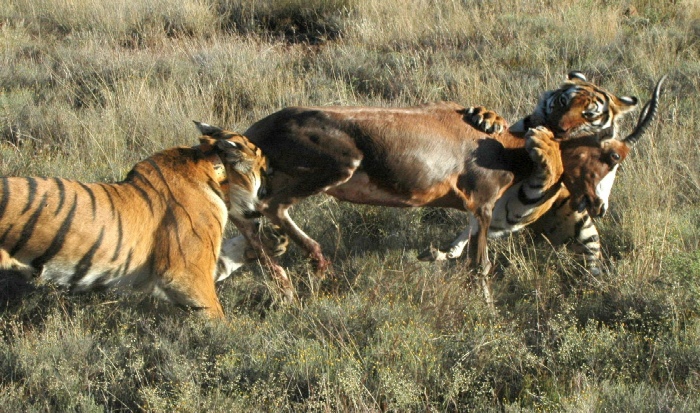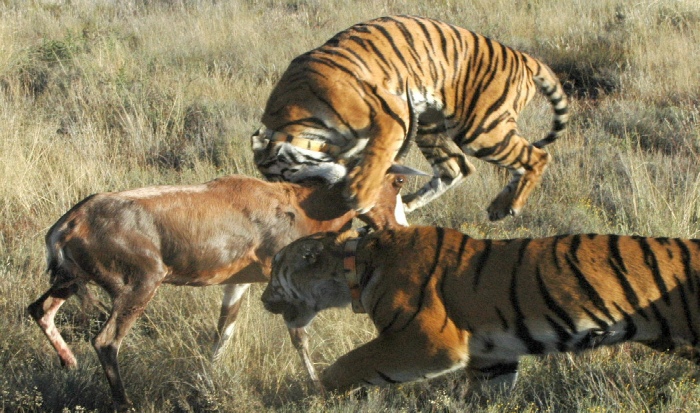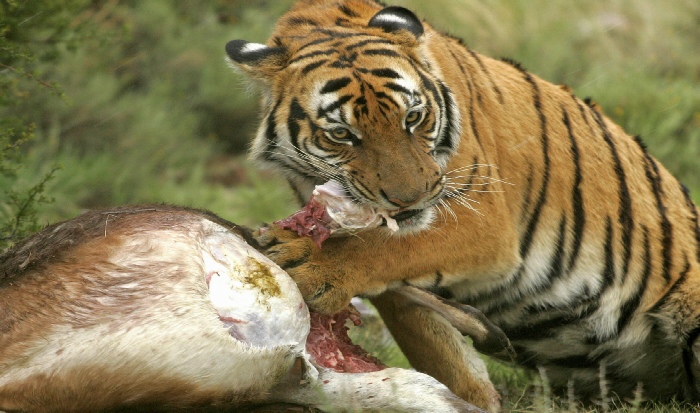
The Chinese Tiger Project has supported research projects across many disciplines such as prey consumption rate assessment, cheetah reintroduction and monitoring, and camera-
Important and comprehensive research programs have been conducted since 2012 by Dr. Maria Fabregas, Dr. Henk Bertschinger, Dr. Gary Koehler, Petri Viljoen and the University of Pretoria. Key research program goals are: an assessment of hunting performance of rewilded South China tigers and pregnancy and pseudo-
Hunting performance of rewilded South China tigers:
1. To assess mean meat intake of rewilded tigers through determination of their kill rate.
Rewilded tigers must be able to hunt frequently enough to provide themselves with the appropriate meat intake if their reintroduction to protected areas in China wants to succeed.
2. Develop a logistic regression model to predict kill sites of ungulate prey from GPS data.
Once the tigers are released back in China, determination of their kill rate and therefore chances of survival, will only be possible through GPS data evaluation.
3. To determine the biological and environmental variables related to hunting success in South China tigers.
Biological variables such as age, sex, rewilding experience, etc and environmental variables such as cover density, slope, wind, distance to water body, etc associated with hunting success should be among the criteria to choose candidate sites to establish protected areas where the tigers will be later reintroduced, as this will contribute to increased survival rates of reintroduced tigers.
Breeding stage in South China tigers to assess pregnancy and pseudopregnancy state in the species.
Male and female captive tigers are kept apart because of their solitary nature, and just brought together for breeding purposes. Given that a main priority of Save China's Tigers is to breed as fast as possible to go through the genetic bottleneck, it is important to determine whether a female is pregnant or not as soon as possible, if she is not, the male can be put back together to try to mate again. However, pregnancy in tigers is not obvious to the naked eye until the very last stage.
1. Behavioral changes related to pregnancy/pseudo pregnancy stage.
Determining behavioral changes (if any) related to pregnancy or pseudo-
2. Hormonal profile of female tigers throughout pregnancy.
To monitor faecal progesterone levels in females is a non-
3. Pregnancy assessment through gain weight measured with photogrammetry.
The monitoring of female reproductive state (pregnant, pseudo-
Preliminary results of the groundbreaking research being conducted by Dr. Maria Fabregas are indeed very positive, showing that the evaluated tigers are able to hunt frequently enough to meet their energetic requirements, but most importantly, they show a high level of adaptability in their hunting behaviour. Dr. Fabregas indicated that, "the fact that they are flexible in their hunting strategies depending on environment is very encouraging, as the habitat where they will be reintroduced in China will be very different from what they experience here in South Africa. Being able to adapt to different environments is crucial for their survival."
reintroduced in China.

Rewilding Research
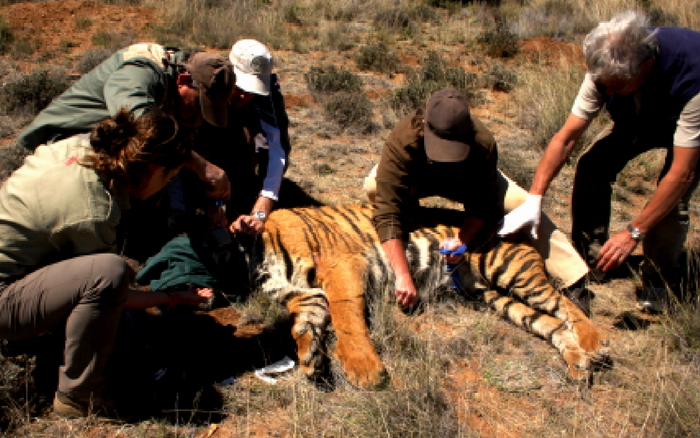
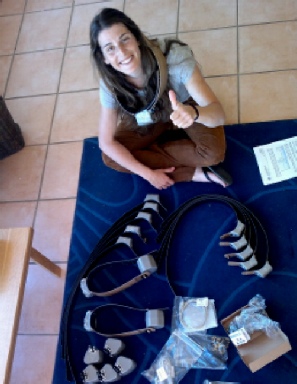
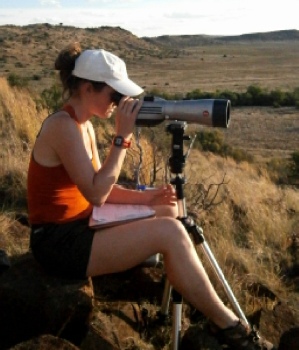
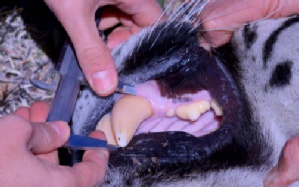

Photogrammetry
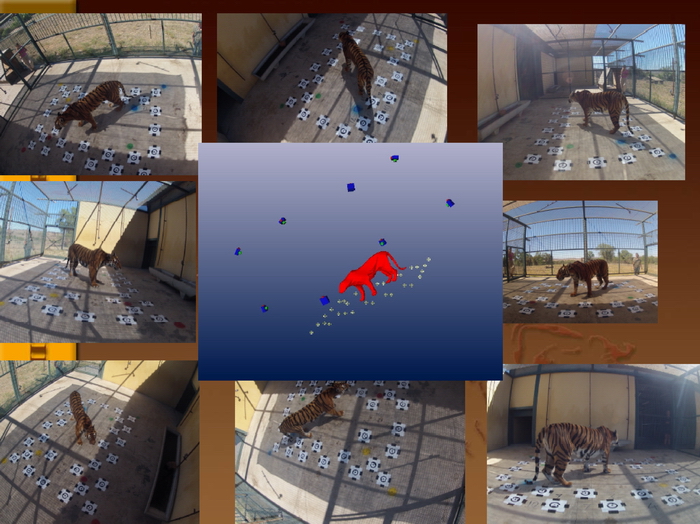
Knowledge of changes in body size or mass is fundamental to our ability to assess how an environment may affect the health of an individual. Take as an example the human obsession with keeping our weight within certain limits. This is not principally driven by a need to 'look good' (although that is one aspect of relevance for humans specifically), but rather with an ingrained desire to be relatively healthy and ensure better chances for survival and performance. For humans, this is fairly easy to do: just jump on a scale at suitable intervals. However, for large mammal ecologists, such basic knowledge is not easily collected because of the obvious difficulties associated with actually weighing large animals. Moreover, for any meaningful trends to be identified, large samples of animals need to be repeatedly weighed.
In an effort to ease the logistical impediments to assessing size and mass of large mammals repeatedly over time, a group from the University of Pretoria's Mammal Research Institute (http://www.up.ac.za/zoology/?q=user/137/research) is fine-
At Laohu Valley Reserve, specifically at the South China tiger rewilding facility, an exciting development in these techniques known as "camera-
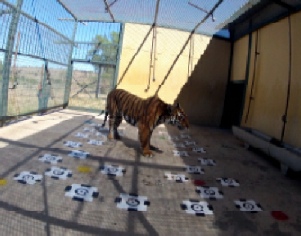

Cheetah Reintroduction
Cheetahs Return to Loahu Valley Reserve & The Free State
Another significant milestone for the Laohu Valley Reserve and the Free State province in South Africa is the return of wild cheetahs to the lands of the reserve as part of a special partnership project of Conservation Finance International and the Endangered Wildlife Trust.
The two male cheetahs were provided by the Endangered Wildlife Trust which is dedicated to conserving threatened species and ecosystems in southern Africa to the benefit of all people. Vincent van der Merwe of the EWT said: "The two males were born in July 2010 on Amakhala Private Game Reserve. They will reach reproductive age soon after arriving at Laohu Valley. They were born in a free ranging environment on a 5700ha reserve, implying that their movements are constrained only by reserve fencing." He added the males, "…were originally part of a litter of 5 (4 males & 1 female). Before the Metapopulation Project was launched in June 2011, 24% of all cheetahs born on small fenced cheetah reserves in South Africa were sold into captivity."
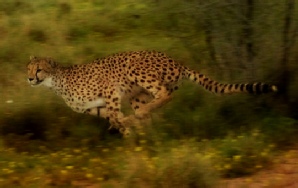
The cheetahs had radio collars attached for GPS tracking and successfully hunted an antelope in a matters of days. Stuart Bray of Conservation Finance International and co-
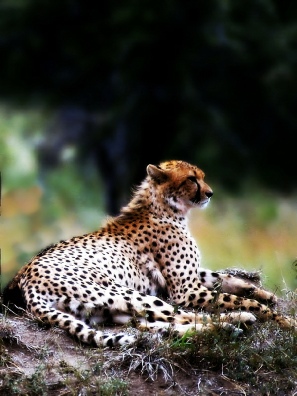

Remote Monitoring
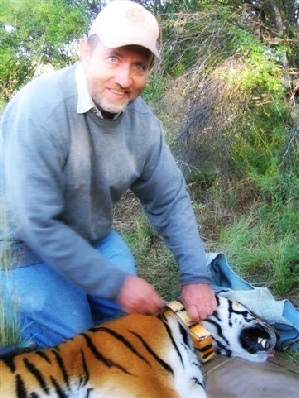
The Project team needs to frequently and closely monitor the tigers for several reasons including health monitoring, research, and breeding management. One of the challenges of rewilding tigers is achieve this monitoring while restricting human interaction and allowing tigers to free-
Besides such basic methods as careful listening and watching with binoculars and telephoto lenses, the Chinese Tiger Project team uses a number of techniques and new technologies for monitoring. The Project has been using radio collars since 2005, not only for selected tigers but also to track patterns of prey species in the hunting camps. Aerial GPS mapping is also performed with specially equipped aircraft.
Project advisor, Petri Viljoen, a renowned ecologist and conservationist, member of the IUCN Antelope Specialist Group and Society of Ecological Restoration, has made significant progress on development of two technologies that offer new monitoring opportunities: a remote controlled 4x4 rock-
Ecologist Petri Viljoen with radio collared tiger.

Preliminary results of the groundbreaking research being conducted by Dr. Maria Fabregas are indeed very positive, showing that the evaluated tigers are able to hunt frequently enough to meet their energetic requirements, but most importantly, they show a high level of adaptability in their hunting behaviour. Dr. Fabregas indicated that, "the fact that they are flexible in their hunting strategies depending on environment is very encouraging, as the habitat where they will be reintroduced in China will be very different from what they experience here in South Africa. Being able to adapt to different environments is crucial for their survival."
reintroduced in China.
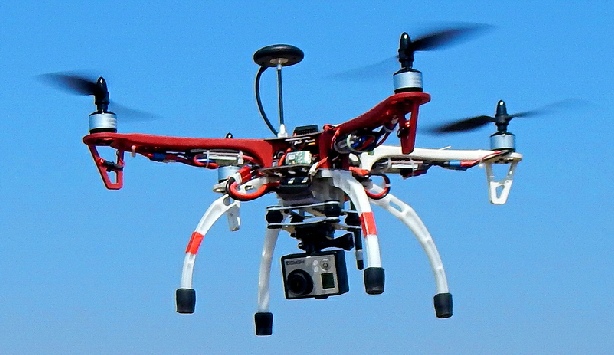
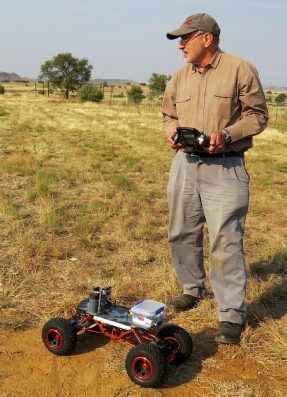

GoPro equipped quadcopter.

The answer to this question is critical for future conservation of endangered animals that are extinct in the wild but have surviving populations in zoos and reserves. If these pampered captives cannot survive in the wild, then efforts to re-
A new paper by conservation scientists documents the first empirical evidence that captive-
The paper was authored by a multidisciplinary team of researchers: Maria Fabregas, a wildlife scientist at the University of Pretoria who has conducted post-
The South China tiger, is listed by the IUCN as critically endangered and is regarded as probably extinct in the wild, leaving captive-
Other relevant variables were explored that effected subsequent hunting success, such as the availability of stalking cover and the upbringing history of tigers while cubs. Twelve tigers over two years of age were fitted with GPS collars and placed individually in 100 ha enclosures to determine their kill rate of Blesbuck, a type of antelope, as a measure of their hunting performance.
The article reports that all the tigers but one, successfully hunted blesbuck and the tigers also killed other species indicating flexibility in their hunting behavior and showed higher kill rates where cover was more abundant, confirming the importance of stalking cover in hunting success for this species. Results showed that the presence of the mother during cub development was not necessary for cubs to hunt later in life, although it had a positive effect on kill rate.
Moreover, that tigers’ ability to adapt to the African veld ecoregion suggests they should be able to adapt back to southern China where opportunities for stalking and ambush are more numerous.
Read more: http://conservationmagazine.org/2015/10/captive-
May be purchased at: http://www.sciencedirect.com/science/article/pii/S0006320715300987
Or requests will be considered: info@savechinastigers.org
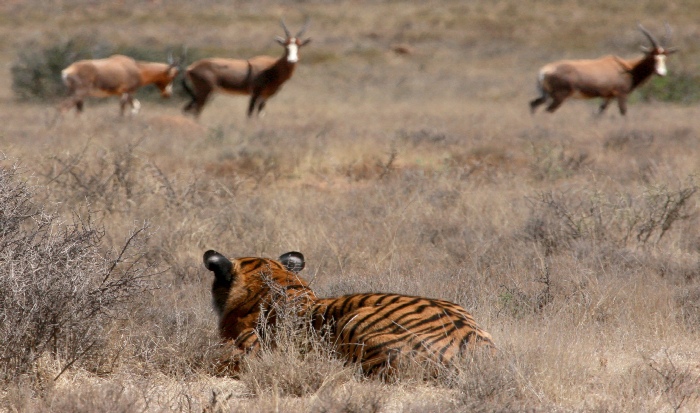
Can captive-
In March 2014, at a meeting of an international team of wildlife scientists at Laohu Valley Reserve, participants praised China’s commitment to reintroduce tigers into the wild. The meetings signalled continued cooperation and new momentum in the effort to reintroduce the world’s rarest tiger, the South China tiger, back into the wild in China.
The scientists and representatives of the UK charity, Save China’s Tigers, hosted a delegation from the Chinese State Forestry Administration. The meetings were part of an effort to evaluate the progress of the South China Tiger Project and discuss next steps. Project Director, Mr. Lu Jun, noted that “not only are these South China tigers in excellent health, but they have been rewilded successfully and are ready to return to the wild in China.”
Save China’s Tigers and the Chinese government delegation also confirmed their commitment to the second phase of the Project – the reintroduction of rewilded South China tigers into large protected wild areas in China. Mr. Lu Jun noted, “We have together already made great progress in rewilding and will continue to work together to restore habitat for the tigers in China.”
The group also reviewed the groundbreaking research being conducted by Dr. Maria Fabregas on the rewilding of the tigers at Laohu Valley Reserve. Save China’s Tigers and State Forestry Administration representatives will be meeting with provincial authorities in the near future and these meetings will lay the groundwork for the development of large fenced reserves to return tigers. Dr. Gary Koehler said, “It is truly gratifying to see the success of this project and the support of the Chinese government to ensure that these tigers are returned to the wild in China.”
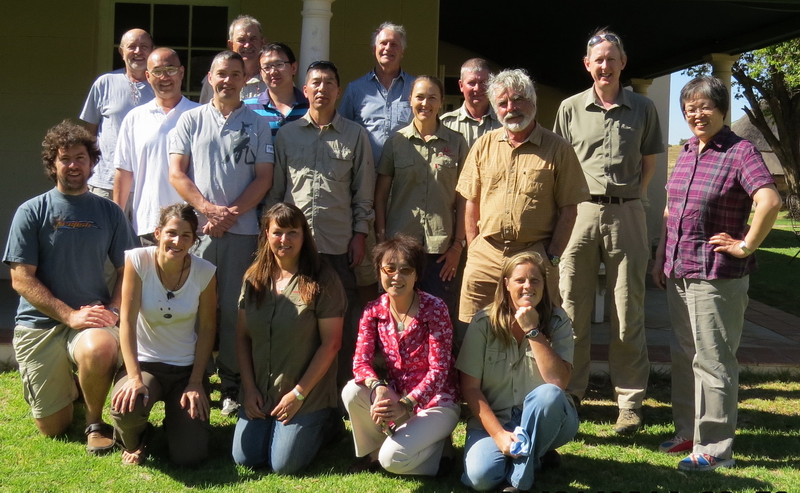

Scientific Workshops
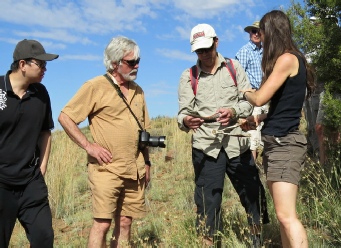
In December 2013, Laohu Valley Reserve hosted a scientific delegation from the Malaysian Department of Wildlife and National Parks and observed the rewilding program and considered its application in Malaysia.
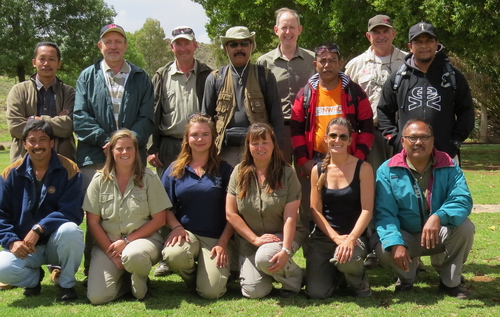
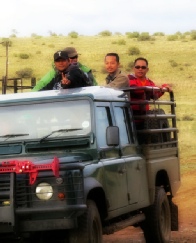

The Chinese Tiger Project has hosted a number of workshops like this 2010 gathering where scientists confirmed the role of rewilding
International wild cat scientists gathered in Oct 2010, at Laohu Valley Reserve to evaluate the progress of the South China Tiger Project and assess its role in conserving the South China tiger in the wild.
The Rewilding workshop included Dr. Gary Koehler, Dr. Peter Crawshaw, Dr. Laurie Marker of Cheetah Conservation Fund, Dr. Jim Sanderson of Small Wild Cat Conservation Foundation, Dr. Nobuyuki Yamaguchi of Department of Biological and Environmental Sciences of Qatar University, and Dr. David Smith of Minnesota University, Chinese government scientists and representatives of SCT.
Results of the workshop confirmed the important role of the Chinese Tiger Project in tiger conservation. Dr. David Smith noted: “Having seen the tigers hunting in an open environment at Laohu Valley Reserve, I believe that these rewilded tigers have the skill to hunt in any environment. We need to use an adaptive learning process when tigers are introduced in China so one strategy might be to release two at a time. Often when you do a reintroduction you may have to repeat the action in order to be successful. SCT should not give up even if the first reintroduction is not successful,”
Dr. Peter Crawshaw added. “In addition, SCT has also done a remarkable job in recovering habitat for South African wildlife. The workshop’s conclusion is timely given the continuing decline of wild tiger populations and their habitat. The initiatives undertaken at Laohu Valley Reserve may represent a model for the conservation of other carnivores and their habitats”.


© Save China’s Tigers -
